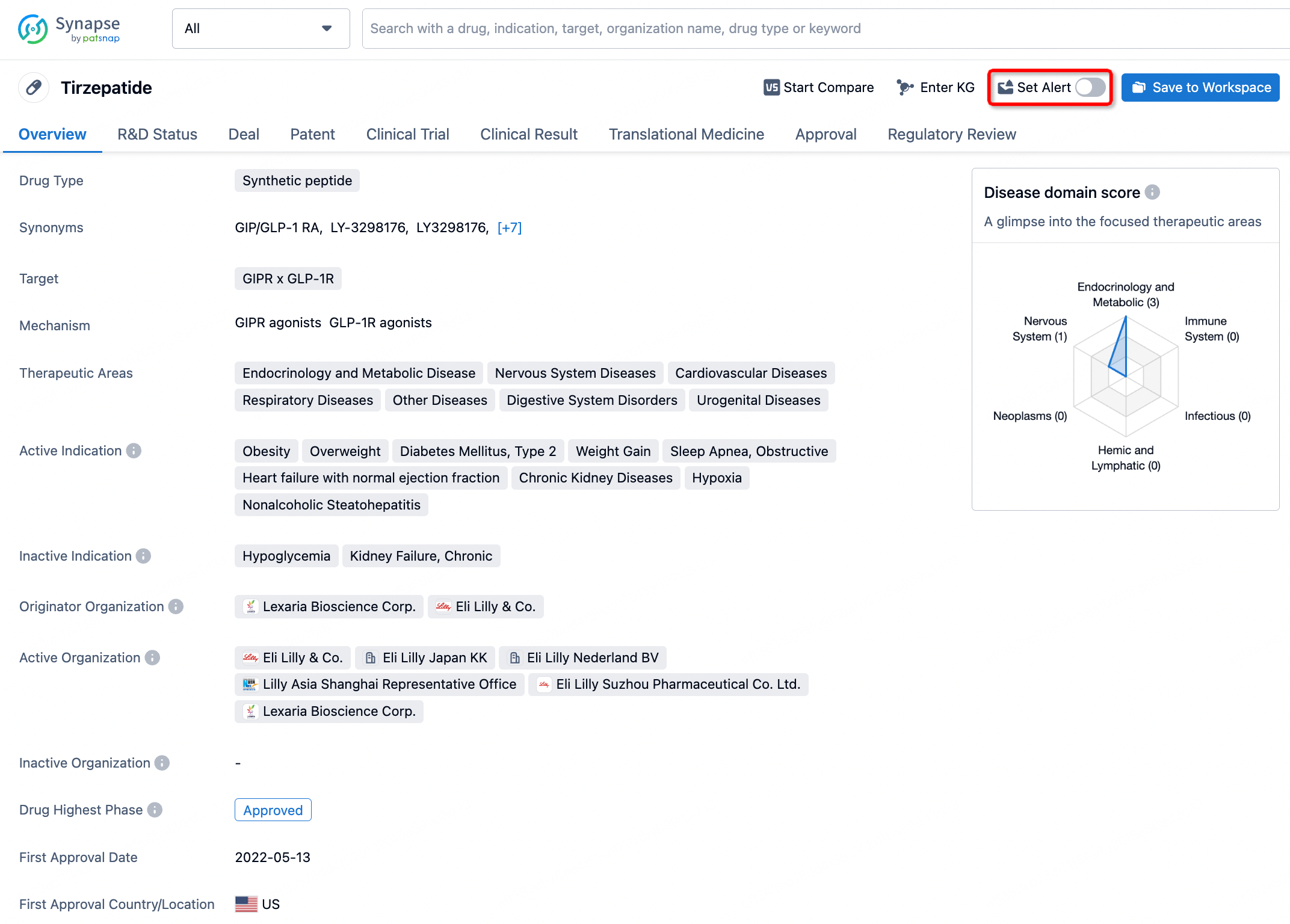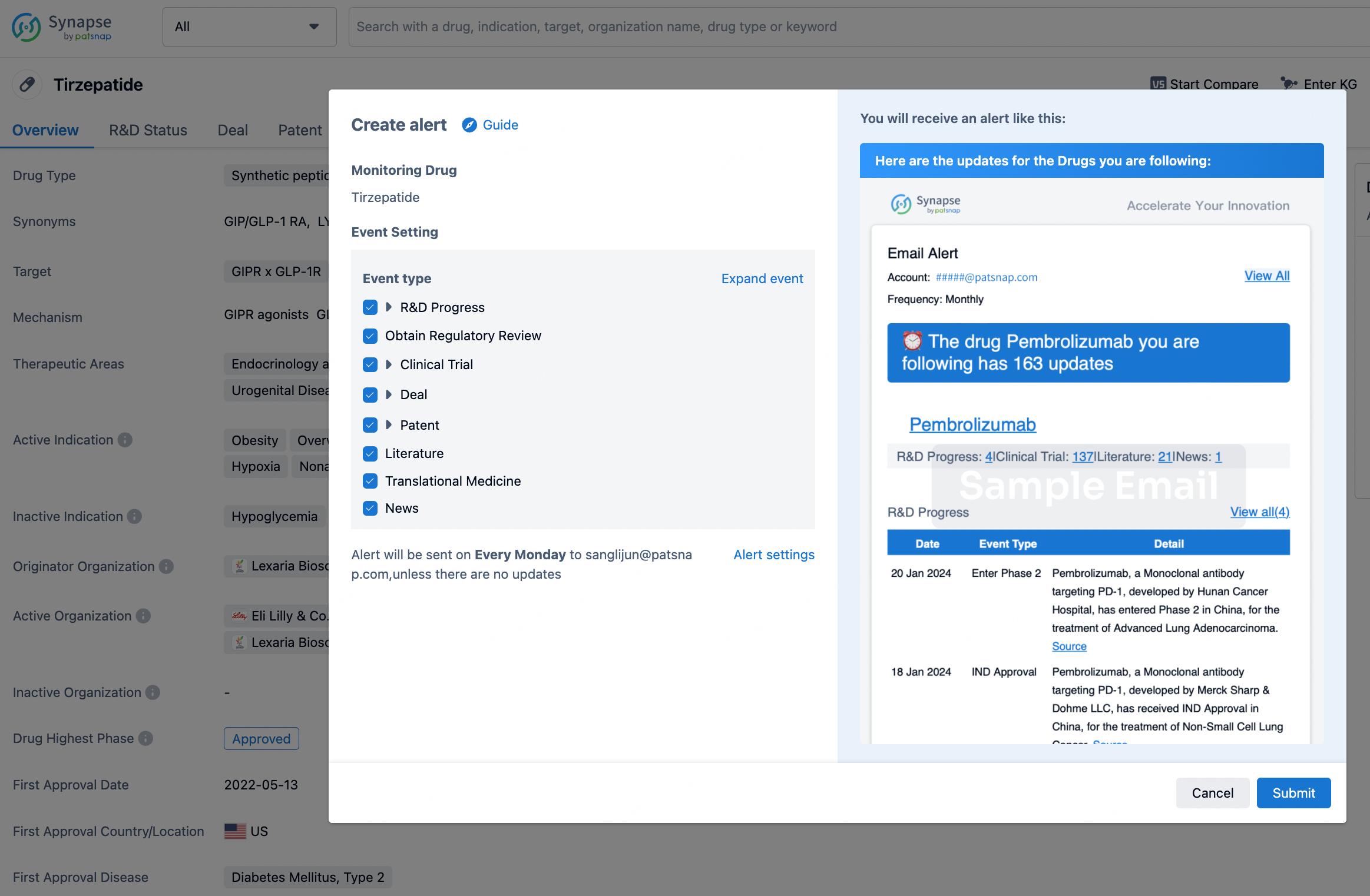Request Demo
What is the mechanism of Cibenzoline Succinate?
17 July 2024
Cibenzoline succinate is a class I antiarrhythmic agent that is primarily used to manage various types of arrhythmias, including atrial and ventricular arrhythmias. Understanding its mechanism of action is crucial for appreciating how it helps in stabilizing irregular heartbeats and preventing potentially dangerous cardiac events.
The primary mechanism of action of cibenzoline succinate involves its influence on the electrical activity of the heart. As a class I antiarrhythmic, cibenzoline succinate primarily works by blocking sodium channels in cardiac cells. This blockade affects the phase 0 depolarization of the cardiac action potential. During this phase, the rapid influx of sodium ions into the cardiac cells leads to the initial depolarization of the cell membrane. By inhibiting this sodium influx, cibenzoline succinate reduces the rate of depolarization, which in turn decreases the excitability of cardiac cells and slows down conduction velocity.
This effect on sodium channels helps to stabilize the cardiac membrane and prevents the propagation of abnormal electrical impulses that can lead to arrhythmias. By slowing down the conduction velocity, cibenzoline succinate allows the heart to maintain a more regular and controlled rhythm.
Additionally, cibenzoline succinate exhibits some degree of potassium channel blocking activity. This blockade affects the repolarization phase of the cardiac action potential. By prolonging the repolarization phase, cibenzoline succinate helps to extend the refractory period—the period during which the cardiac cells are not responsive to further stimulation. This extended refractory period can be beneficial in preventing reentrant arrhythmias, which occur when an electrical impulse re-enters and repeatedly stimulates a region of the heart, leading to sustained abnormal rhythms.
The combination of sodium and potassium channel blockade by cibenzoline succinate provides a dual mechanism for controlling arrhythmias. By targeting both depolarization and repolarization processes, cibenzoline succinate can effectively manage different types of arrhythmic events, providing a comprehensive approach to cardiac rhythm stabilization.
It is also important to note that cibenzoline succinate has some degree of autonomic activity. It can exhibit mild anticholinergic effects, which might influence heart rate and conduction properties indirectly. These autonomic effects, while secondary to the primary ionic channel blockades, can contribute to the overall antiarrhythmic efficacy of the drug.
In clinical practice, cibenzoline succinate is administered under careful medical supervision due to its potent effects and potential for side effects. As with all antiarrhythmic drugs, monitoring and dosage adjustments are essential to achieve the desired therapeutic outcome while minimizing adverse effects.
In summary, cibenzoline succinate exerts its antiarrhythmic effects primarily through the blockade of sodium channels, which reduces the excitability and conduction velocity of cardiac cells. Additionally, its potassium channel blocking activity prolongs the refractory period, helping to prevent reentrant arrhythmias. Its combined effects on multiple ionic channels provide a robust mechanism for stabilizing cardiac rhythms and managing various types of arrhythmias effectively.
The primary mechanism of action of cibenzoline succinate involves its influence on the electrical activity of the heart. As a class I antiarrhythmic, cibenzoline succinate primarily works by blocking sodium channels in cardiac cells. This blockade affects the phase 0 depolarization of the cardiac action potential. During this phase, the rapid influx of sodium ions into the cardiac cells leads to the initial depolarization of the cell membrane. By inhibiting this sodium influx, cibenzoline succinate reduces the rate of depolarization, which in turn decreases the excitability of cardiac cells and slows down conduction velocity.
This effect on sodium channels helps to stabilize the cardiac membrane and prevents the propagation of abnormal electrical impulses that can lead to arrhythmias. By slowing down the conduction velocity, cibenzoline succinate allows the heart to maintain a more regular and controlled rhythm.
Additionally, cibenzoline succinate exhibits some degree of potassium channel blocking activity. This blockade affects the repolarization phase of the cardiac action potential. By prolonging the repolarization phase, cibenzoline succinate helps to extend the refractory period—the period during which the cardiac cells are not responsive to further stimulation. This extended refractory period can be beneficial in preventing reentrant arrhythmias, which occur when an electrical impulse re-enters and repeatedly stimulates a region of the heart, leading to sustained abnormal rhythms.
The combination of sodium and potassium channel blockade by cibenzoline succinate provides a dual mechanism for controlling arrhythmias. By targeting both depolarization and repolarization processes, cibenzoline succinate can effectively manage different types of arrhythmic events, providing a comprehensive approach to cardiac rhythm stabilization.
It is also important to note that cibenzoline succinate has some degree of autonomic activity. It can exhibit mild anticholinergic effects, which might influence heart rate and conduction properties indirectly. These autonomic effects, while secondary to the primary ionic channel blockades, can contribute to the overall antiarrhythmic efficacy of the drug.
In clinical practice, cibenzoline succinate is administered under careful medical supervision due to its potent effects and potential for side effects. As with all antiarrhythmic drugs, monitoring and dosage adjustments are essential to achieve the desired therapeutic outcome while minimizing adverse effects.
In summary, cibenzoline succinate exerts its antiarrhythmic effects primarily through the blockade of sodium channels, which reduces the excitability and conduction velocity of cardiac cells. Additionally, its potassium channel blocking activity prolongs the refractory period, helping to prevent reentrant arrhythmias. Its combined effects on multiple ionic channels provide a robust mechanism for stabilizing cardiac rhythms and managing various types of arrhythmias effectively.
How to obtain the latest development progress of all drugs?
In the Synapse database, you can stay updated on the latest research and development advances of all drugs. This service is accessible anytime and anywhere, with updates available daily or weekly. Use the "Set Alert" function to stay informed. Click on the image below to embark on a brand new journey of drug discovery!
AI Agents Built for Biopharma Breakthroughs
Accelerate discovery. Empower decisions. Transform outcomes.
Get started for free today!
Accelerate Strategic R&D decision making with Synapse, PatSnap’s AI-powered Connected Innovation Intelligence Platform Built for Life Sciences Professionals.
Start your data trial now!
Synapse data is also accessible to external entities via APIs or data packages. Empower better decisions with the latest in pharmaceutical intelligence.


